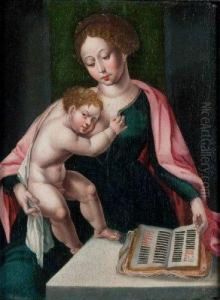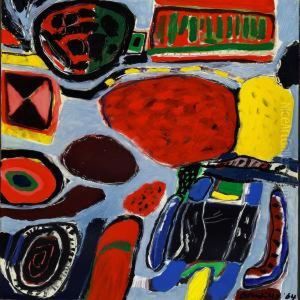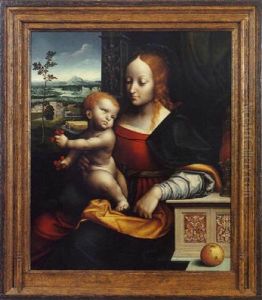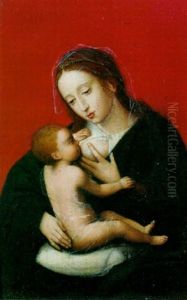Corneille Van Cleve Paintings
Corneille Van Cleve was a prominent French sculptor born in Paris in 1645, into a family originally from the Netherlands, which had settled in France. His father, Balthasar van Cleve, was also a sculptor, providing Corneille with an intimate exposure to the art from an early age. This familial environment nurtured his talents and set the stage for his future success in the world of French sculpture. Van Cleve is particularly noted for his contributions to the Baroque movement, a period characterized by dramatic expression and elaborate detail, which was becoming increasingly popular in France during his lifetime.
Van Cleve's education and early career were marked by his apprenticeship under various established artists of the time, absorbing the diverse influences that would later be reflected in his work. He became a member of the Académie Royale de Peinture et de Sculpture in 1675, an acknowledgment that not only ratified his skill and prominence as a sculptor but also integrated him into the heart of the French artistic elite. His membership in the Academy allowed him to participate in significant projects, including contributions to the decoration of the Palace of Versailles, one of the most prestigious commissions of the era.
Throughout his career, Van Cleve was renowned for his mastery in sculpting marble and bronze, displaying a remarkable ability to capture movement and emotion. His works often featured mythological and allegorical subjects, imbued with a sense of vitality and expressiveness that was highly regarded by his contemporaries. Among his notable creations is the sculpture of 'Time Saving Truth from Falsehood and Envy' for the gardens of Versailles, a testament to his skill in conveying complex narratives through his art.
Van Cleve's legacy is that of a sculptor who bridged the traditions of his Dutch heritage with the flourishing Baroque style of his adopted country. His contributions to the art of sculpture during the 17th and early 18th centuries left a lasting impact, not only in France but also in the broader context of European art. Corneille Van Cleve passed away in Paris in 1732, leaving behind a body of work that continues to be admired for its technical excellence and emotional depth.



